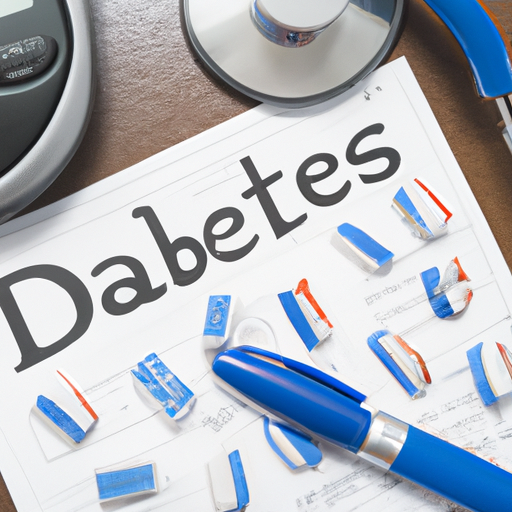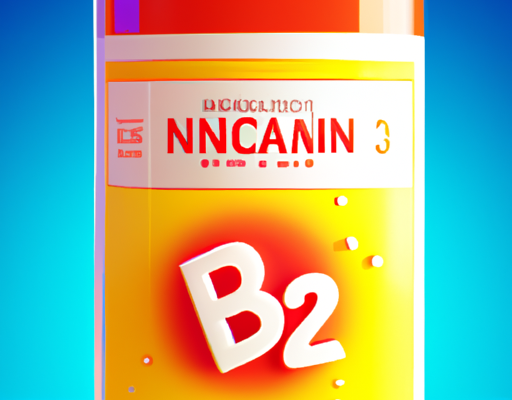Definition of Diabetes Insipidus
Diabetes Insipidus (DI) is a relatively rare endocrine disorder that is caused by different malfunctions with the production of the antidiuretic hormone, also known as vasopressin. The primary symptom of DI is an excessive output of extremely diluted urine, which leads to a decrease in the body’s ability to retain water in the bloodstream, resulting in hypernatremia, or high sodium levels, in the blood. Due to this, there are also associated changes in sodium and electrolyte levels, as well as increased thirst, trouble sleeping, headaches and dry mouth. In some cases, even long-term complications, such as seizures or coma, can occur if the sodium and electrolyte levels become imbalanced. Treatment for DI consists of medication and fluids, as well as closely monitoring and regulating sodium and electrolyte levels.
Signs and Symptoms of Hypernatremia
Hypernatremia in diabetes insipidus is a serious medical condition that requires prompt medical attention. The main sign and symptom of hypernatremia is a high level of sodium in the blood. Other symptoms may include extreme thirst, frequent urination, confusion, disorientation, irritability, restlessness, and fatigue. High temperatures, muscle cramps, convulsions, and coma can also be signs of hypernatremia. In severe cases, seizures, coma, and death may occur, so it is important to seek medical attention if any of these symptoms are present. Early diagnosis and treatment can significantly improve the prognosis for those with hypernatremia in diabetes insipidus.
Causes of Hypernatremia in Diabetes Insipidus
Hypernatremia, or an abnormally high level of sodium in the blood, is a serious and potentially life-threatening health condition that can occur in people with diabetes insipidus. It is caused by a lack of antidiuretic hormone (ADH), leading to a decrease in water reabsorption and an increase in sodium levels in the blood. Hypernatremia can also be caused by dehydration due to not drinking enough fluids or when the body loses a lot of water due to excessive sweating, vomiting, and diarrhea. In people with diabetes insipidus, the inability to concentrate urine due to a lack of ADH means that they are more likely to become dehydrated and develop hypernatremia more readily. Other causes of hypernatremia in diabetes insipidus include excessive use of salt, certain medications, and certain medical conditions. Regardless of the cause, if hypernatremia is not treated promptly, it can lead to serious health complications.
Diagnostic Tests for Hypernatremia
Hypernatremia in Diabetes Insipidus is a rare but potentially life-threatening condition that occurs when the electrolyte balance in the body gets out of harmony. Thankfully, this condition can be diagnosed quickly and treated effectively. To diagnose hypernatremia, doctors may order a blood test to check the levels of sodium, potassium, and other electrolytes. They may also conduct a urine sample test to measure the amount of electrolytes in urine. Additionally, they might do a physical exam and ask questions about medical history to see if there are any underlying issues that could be causing the hypernatremia. As it relates to Diabetes Insipidus, doctors may order a water deprivation test and antidiuretic hormone test. These tests can help to identify the underlying cause of the hypernatremia, whether it is due to an electrolyte imbalance or due to a lack of antidiuretic hormone. The results of these tests will help the doctor to create a personalized treatment plan for the patient.
Treatments for Hypernatremia in Diabetes Insipidus
Treating Hypernatremia in Diabetes Insipidus often involves a combination of medical and lifestyle interventions. Medical treatments for Hypernatremia in Diabetes Insipidus include administering desmopressin, a hormone that helps increase the reabsorption of water from the kidneys, as well as managing any underlying conditions that might be contributing to the Hypernatremia. Additionally, it is important to monitor fluid and electrolyte levels to ensure that the body does not become overly dehydrated. Lifestyle changes that can help manage Hypernatremia in Diabetes Insipidus include drinking plenty of fluids, avoiding caffeine and alcohol, and avoiding activities that can lead to excessive sweating. Additionally, individuals should be sure to monitor their diet, as a diet low in sodium may help reduce the risk of Hypernatremia. Although Hypernatremia can be a serious condition, with proper treatment and lifestyle modifications individuals with Diabetes Insipidus can return to their normal activities.
Prevention of Hypernatremia in Diabetes Insipidus
Preventing hypernatremia in diabetes insipidus can be challenging, but it is possible by taking a few key steps. Firstly, it is important to monitor the affected individual’s fluid intake and urinary output closely to ensure that fluid balance is maintained. Additionally, if the individual is on medications for their diabetes insipidus, it is essential to keep track of their medication regimen and adjust the dose as needed. To prevent dehydration, it is important to drink adequate amounts of water throughout the day, avoiding excessively sugary or caffeinated beverages and sports drinks. Finally, it is important to see a medical practitioner regularly and follow their advice for proper management of the condition. By managing the symptoms and following these preventive measures, it is possible to reduce the risk of hypernatremia in those with diabetes insipidus.
Summary
Hypernatremia, or high blood sodium, is a serious condition that can be caused by various medical conditions, including diabetes insipidus. This condition is a rare form of diabetes that occurs when the body does not produce enough vasopressin, a hormone that helps to regulate the body’s production of water. Without enough vasopressin, the body cannot maintain normal levels of water, leading to dehydration and electrolyte disturbances. If left untreated, hypernatremia can lead to a number of serious consequences, such as confusion, seizures, coma, and even death. The main treatment for hypernatremia caused by diabetes insipidus is to supplement the body with vasopressin or a related drug, as well as to replenish the body’s lost fluids and electrolytes. It is important to take the medication and follow the doctor’s instructions to ensure an effective outcome.





No Comments